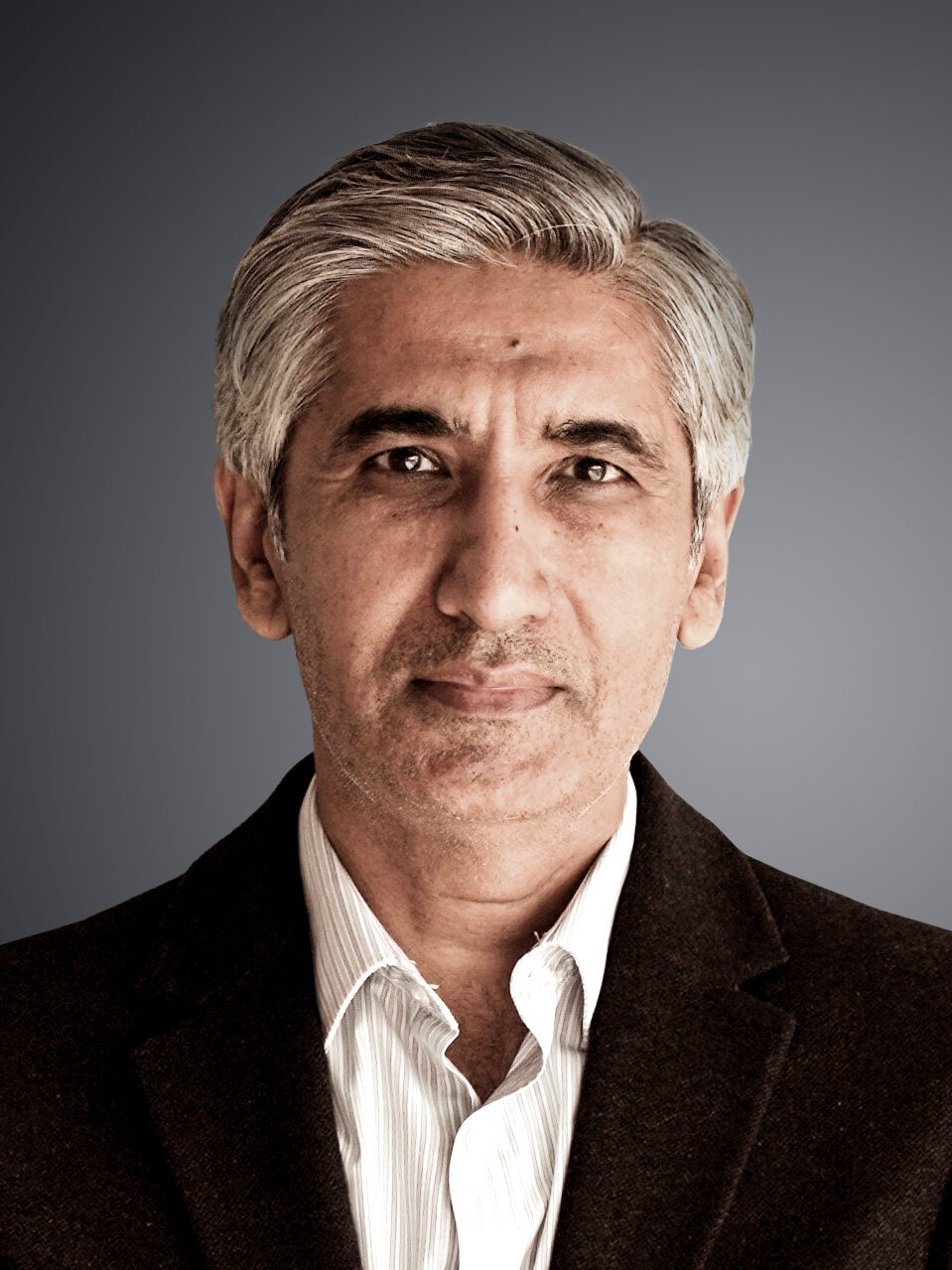Residents in Dubai are unlikely to soon forget that fateful day in April, when an unprecedented downpour threatened life, limb and property. The question is, ‘What is the way forward for the building construction industry?
Danger in the dark
April 16, 2024 marked a dramatic shift in the way Dubai viewed its relationship with the weather. Rain, once a rare and cherished event, turned into a cause of fear and uncertainty. Namrata Aswani, living in a villa in Al Manara with her extended family of 12 and two helpers, was accustomed to occasional weather warnings, but this time was different. At 4am, thunder rattled the windows, followed by torrential downpour. The winds were so fierce, the trees in the backyard were uprooted.
The family decided to work from home, trying to make the best of the situation with breaks for tea and snacks. As the hours passed, the neighbourhood’s drainage system began to fail, leading to waterlogged streets, eventually breaching the threshold of their home. Inside, the water level rose alarmingly fast, partially submerging their cars.
The family faced a series of escalating challenges. First, the water pump failed, then a leak from the terrace caused electrical issues, resulting in a total power outage. Fortunately, they had stocked up on five-gallon water bottles the day before the storm hit – about 25-30 of them. These reserves, meant for the needs of a large family, became crucial for cooking, bathing and even flushing toilets, as water continued to pour into their home with no end in sight.
The storm wreaked further havoc. It damaged the main door. And the force of the water led to the floating cars colliding with one another. Adding to the chaos, a municipality garbage bin floated into their house, colliding with their already-dented cars.
Without regular water supply: the family resorted to using disposable plates, cups and utensils to conserve what little water they had left. Getting groceries or essential supplies was out of the question, and they feared running out of water reserves. They called Dubai Municipality for help but were told it could take up to 7-8 days before they could reach the area to mitigate the situation. As Aswani recalls, with no electricity, the situation felt worse than that during the COVID-19 lockdown – no AC, no Wi-Fi and total isolation.
The city’s usual hustle and bustle had come to a standstill, and the serene moments of working from home had turned into a battle for survival. Aswani’s experience highlighted not just the severity of the weather but also the unpreparedness and the human spirit’s resilience in the face of unprecedented challenges.
Watching climate change play itself out
Dubai typically receives around 130 millimetres of rainfall, annually. April’s rainfall, however, was far from typical, with heavy, localised downpours causing widespread flooding and disruption. The intensity of the rainfall was unprecedented, affecting various regions differently, including neighbouring Oman and Saudi Arabia. Experts attributed the phenomenon to climate change, specifically rising sea surface temperatures, leading to such severe weather events.
While the government has always worked on improving infrastructure, the city’s buildings faced significant challenges in the downpour. Hotels, airports and shopping malls, vital to Dubai’s tourism industry, faced unprecedented disruption. People, like Aswani, were stranded in their homes without electricity. Hospitals found it hard to move patients to safety due to leakages, highlighting the critical need to ensure wellbeing in these facilities. Airports experienced flooded runways and terminals, disrupting domestic and international travel. Businesses incurred losses due to damaged inventory and interrupted operations, adding financial strain on all stakeholders. Eventually, the rainwaters subsided, and life returned to normal, but it triggered several questions relating to infrastructure and buildings. Is the region at large prepared for large[1]scale climate events? What about the building construction industry, in particular – especially its ability to adapt?
Time to re-evaluate rainfall data

A.R. Suresh Kumar, Vice President & Head, IOBG, Voltas Limited, says the region is, indeed, experiencing more frequent rains, when compared to the past, necessitating a change in design and construction approach. Flood relief and drainage systems are typically based on 50-100 years of historical data, he says, adding that it is time for regional governments to re-evaluate the data and incorporate additional risk factors, using exaggerated figures as the new baseline for designing flood relief, plumbing and drainage systems.
Suresh Kumar believes it is crucial to remember that even if individual buildings or plots are designed with these high input numbers, the entire volume of water ultimately needs to be discharged into the city’s drainage system. Without enhanced citywide drainage systems, the problem will persist, he says. The government is actively working on improving infrastructure, such as drainage systems, but buildings need significant upgrades to cope with these changes.

Saeed Al Abbar, CEO, AESG, says: “Building resilience in cities is essential to not only make populations and infrastructure less susceptible to damage and loss but to also make them more agile to the unpredictable nature of climate change impacts. The urgency of climate change demands more than incremental change – it demands a revolution in how we approach infrastructure, where resilience is not just an aspiration; it’s an inherent feature of our infrastructure. By integrating cutting-edge technology and appropriate sustainable architectural design and engineering considerations, we can develop infrastructure that stands the test of time.”

Rehan Shahid, Director (MEP), P&T Architects and Engineers Ltd, says that to address the challenges posed by increased rainfall and flooding, several specific design and construction practices need to be prioritised. Upgrading drainage systems to efficiently manage higher volumes and intensity of rainfall is essential, which may involve installing larger capacity pipes, improving surface drainage, and integrating better with landscape features, he says. Shahid mentions that enhancing waterproofing measures in building envelopes, such as roofs, walls and windows, can prevent water infiltration during heavy rainfall events. Additionally, ensuring that structural systems are robust enough to withstand the increased loads and forces from heavy rain, including wind-driven rain and potential flooding, is crucial, he says. Implementing sustainable landscaping practices, such as green roofs and permeable pavements, can help absorb and manage rainwater on-site, reducing runoff and flooding risks, he says. His advice is to consider elevation and site characteristics during the design phase to minimise the risk of flooding and water damage. He says that this may involve strategically placing buildings, infrastructure and critical facilities on higher ground and choosing building materials that are resilient to moisture and water damage, as well as are resistant to corrosion and degradation over time. “By prioritising these design and construction practices, buildings in the GCC region can be better equipped to handle future weather challenges associated with climate change, ensuring resilience and sustainability in the face of evolving environmental conditions,” Shahid says.

Sekhar Reddy, Managing Director, Lexzander, says that for existing buildings, a comprehensive survey should be conducted to assess both the structure and its surrounding infrastructure to identify and mitigate potential water ingress and flooding risks, with mandatory precautionary measures in place. For new buildings, he says, effective systems should be designed at the construction stage to minimise impact, incorporating the same precautionary measures. Additionally, he says, infrastructure, especially in new developments, must be robustly designed to withstand nature’s challenges.

Nicholas Byczysnki, Director of Sustainable Engineering, AESG (NB), emphasises that in the design phase, crucial early decisions significantly influence storm water resilience. Initially determining the design rainfall intensity, typically based on duration and return period, is essential, he says. According to the recent Dubai Building Code, he says, roof systems must withstand an intensity of 75mm/ hour, though lower intensities are permissible for landscaped and external areas. The April storm exceeded these minimum standards, unlike some other jurisdictions, which allow lower values, he points out. Another critical consideration, he says, is the layout of stormwater pipework. He adds that pipes commonly fail at joints and elbows, making the elimination of horizontal drainage runs within building interiors a prudent choice.
Byczysnki says: “Rainfall in the UAE is rare in terms of days of rainfall but intense in volume. Relying solely on pumped systems can be a risk, as the consequence of failure of the pumps is so high, and they may not have been required to run for 10-12 months. Generally, gravity discharge should be preferred, but where necessary, pumps should be sized with a significant safety factor, and a regular and effective testing and maintenance regime implemented.” Systems that are poorly installed or unable to withstand significant pressure should be avoided to prevent failures at pipe joints, particularly serious if they occur in occupied areas, he adds.
From a design perspective, Byczysnki says, despite widespread flooding during heavy rainfall events, well-designed infrastructure in some newly constructed areas effectively drain flooded zones within hours, showcasing design success. He says water ponding even in normal rainfall illustrates instances of flawed infrastructure design. At the commercial building level, the circulation of videos showing damaged rainwater pipes inside retail areas highlights serious design oversights, he points out. Proper design practices dictate routing rainwater pipes and other services through common areas, not retail or commercial spaces, he says. If unavoidable, there are established design methods to mitigate such issues, he adds.
Byczysnki says that implementing regulations to limit runoff from plots into infrastructure is crucial to prevent the overwhelming of drainage systems. Additionally, he says, thorough topographic analysis during site selection and infrastructure design is essential, as some communities experienced rising water levels, post-rain, due to natural drainage into low-lying areas in April. “Construction supervision, ensuring the integrity of the pipe works and ensuring the design slopes are achieved, is something that is often overlooked, when it comes to stormwater drainage installations,” he says. The attitude is, “It rains once in a blue moon here in the GCC region”, he says.
Shahid says the deluge inundated low-lying areas, streets and parking lots, causing extensive property damage and severe traffic disruptions. “During the heavy rain, roofs, walls, windows and basements of buildings suffered water infiltration, leading to interior damage, mould growth and structural decay,” he says, emphasising the detrimental impact on residential and commercial properties.
The adverse weather conditions also severely affected transportation networks. “Drivers encountered congested roads and increased accidents as they navigated through the challenging conditions of flooded streets and reduced visibility,” Shahid says, underscoring the broader impact on urban mobility and emergency response.
Elevators, basements… you name it
Byczynski, highlighting recurring vulnerabilities in Dubai’s architectural landscape during storms, says: “Numerous high-profile buildings faced significant challenges due to recent storms, revealing recurring issues that exacerbate failures and result in substantial insurance claims,” he says. Storm water design is sometimes underestimated in the region due to a prevailing belief that “it never rains in Dubai”. This is not accurate, he says. And it’s crucial for new as well as existing buildings to be resilient and be prepared for current challenges and potential future extreme weather conditions.
Reddy, touching on another important aspect of buildings – elevators – says: “Irrespective of any mechanism, it is never recommended to use the elevators in such eventuality. The connecting services could have got exposed, and it is not safe to use the elevators.”
Not being able to use elevators poses challenges to occupants of high[1]rises, irrespective of physical condition. Reddy, proposing several innovative solutions to address the issue, says one such solution is implementing standalone emergency power systems and cabling provisions, which can facilitate the quick re-energisation of lifts during power outages. Additionally, Reddy suggests the introduction of external provisions on building facades to accommodate emergency lift capsules for transporting occupants. “This needs a good study before putting into use,” he says, as a note of caution, highlighting the need for thorough research and feasibility studies before implementation.
Weighing in on backup systems, Shahid says, “Many recent and new building constructions include backup power systems to ensure uninterrupted operation during emergencies, providing essential support to critical building systems, such as elevators, lighting, fire alarms and communication systems.” However, he points to the need to reconsider the duration and capacity of the backup systems. He suggests several measures to enhance the reliability and effectiveness of backup power systems. One key measure is ensuring that emergency generators are appropriately sized and regularly maintained to support the required load during prolonged outages, he says. Implementing Uninterruptible Power Supply (UPS) systems, he says, can offer temporary backup power to vital equipment, such as elevator controls and emergency lighting, bridging the gap during the transition to generator power or short-duration outages.
Shahid also advocates having redundant power feeds from multiple utility sources or distributed energy resources, which can significantly enhance reliability and resilience against grid failures or localised outages. Furthermore, he recommends implementing remote monitoring and management systems to track the status and performance of backup power systems in real-time, enabling proactive maintenance and troubleshooting to ensure continuous reliability.
Suresh Kumar highlights another equally crucial area of concern – the inevitability of basement carparks in most construction projects. “Let’s understand the reality that basement carparks cannot be avoided in most cases,” he says. He advocates for proactive measures to prevent external rainwater from infiltrating these spaces, suggesting mechanical solutions, such as automated shutters and popup barriers. Additionally, he stresses the importance of installing heavy-duty pump-out systems.
Adding another dimension to basement features of a building, he says: “It’s important to avoid locating electrical substations and critical electrical panel rooms in the basement. This way, in the unlikely event of uncontrolled flooding, these crucial services remain unaffected.”
Shahid offers a broader view on parking solutions, advocating for a thorough evaluation of podium-level versus basement parking. “The decision should be based on a comprehensive assessment of various factors, including site-specific conditions, project objectives, user needs and long-term sustainability goals,” he says.
Shahid emphasises the importance of land use efficiency in densely populated urban areas, where land is both scarce and expensive. “Basement parking can optimise land utilisation by freeing up space for other purposes, above ground,” he says. However, he acknowledges that each approach has its advantages and limitations, influenced by the specific context of the project. In flood-prone areas, basement parking is vulnerable to water damage, making podium-level parking a more resilient choice, he says.

Façade focus
Equally under purview are façades. Marina Kindelan, Director of Façades for the Middle East, AESG, emphasises the importance of sealing and waterproofing strategies for new construction projects to prevent leaks during heavy rain. She notes that while the building envelope can be designed to be waterproof, façades are particularly vulnerable during floods. “The primary consideration should be to protect the weakest points of the façade, such as joints, system interfaces and thresholds, from overflow risk,” Kindelan says. She stresses the importance of diverting water away from the façade and channelling it into specialised primary drainage systems to prevent accumulation.
In high-risk areas, such as the bottom details of sliding doors with minimal thresholds, additional drainage systems are crucial, Kindelan says. She recommends incorporating multiple lines of defence and proper membrane systems to accommodate movements and construction tolerances. Successful waterproofing, she says, relies on thoughtful architectural design, meticulous detailing and coordinated efforts amongst various disciplines during the design and construction phases. She also highlights the need for selecting appropriate materials and ensuring the installation team is knowledgeable about the project’s specifics.
Echoing Kindelan’s words, Byczysnki emphasises the critical role of façade detailing and commissioning in preventing stormwater ingress during extreme weather conditions. He notes that the choice of drainage pipe and jointing method is also crucial. Shahid highlights the importance of material selection in enhancing building resilience. Choosing corrosion[1]resistant metals and flexible waterproof membranes for exterior cladding and roofing can significantly prolong building lifespan and reduce maintenance costs, he explains.
Weighing in, Byczysnki highlights the importance of material selection, advocating the use of high-quality HDPE with electro-fusion joints, despite the higher cost. He warns that value engineering should carefully consider the potential consequences of cost savings. “Most MEP failures stem from defective pipe joints, systems designed for low rainfall intensities, and undersized or poorly maintained lifting stations,” he says.
Some common questions that are doing the rounds are: ‘What about tried[1]and-tested methods?’ ‘Why cannot the region simply adopt rain-resilient best practices in place in other countries? The answers are not as simple, some say. Addressing concerns about adopting and applying international standards to Dubai’s unique climate, Suresh Kumar advocates a balanced approach. “While it is crucial to learn from regions with daily rainfall or occasional flooding, we must tailor our strategies to suit Dubai’s specific challenges,” he says. He emphasises the need for benchmarking against moderately rainy regions and integrate their proven design standards into local building practices. “Buildings exist in other parts of the world where rains are a daily affair,” he says. “How are those buildings existing and how are those people surviving. While we don’t need to design according to the Amazon rainforest, we need to benchmark our region with some of the moderately raining or occasionally flooding places and adopt their design standards or take experience from those regions and incorporate in our building designs.”
Shahid says there is a sprinkling of rain-resilient structures in the GCC region itself. He points to successful examples of sustainable urban design in the Middle East. “The King Abdullah Financial District, in Riyadh, incorporates green roofs, rainwater harvesting and water-sensitive landscaping to manage runoff and mitigate flooding,” he says. He also points to Msheireb – Downtown Doha, in Qatar, which features green infrastructure elements, like green roofs, permeable paving and water-efficient landscaping to enhance resilience against heavy rain events.
Byczysnki, for his part, describes his involvement in a museum project currently under construction in Abu Dhabi, where protecting artifacts from rainwater ingress, he says, is a major concern. “All drainage pipework was routed externally within the façade to ensure it was not visible,” he explains. “The system was designed to handle minor and major storms, with the landscape shaped to create flood ponds that contain excess rainfall within defined areas of the plot.”
Suresh Kumar says rising groundwater levels, due to the increasing number of waterfront apartments and buildings, makes it crucial for the civil engineering community to reconsider current construction standards and methodologies, particularly regarding waterproofing and foundation design. One practical solution that can be implemented immediately, he says, is raising the ground floor levels in villa communities to prevent water ingress and protect the houses from flooding.
Suresh Kumar emphasises the need for redesigning electrical, plumbing and vertical transportation systems in existing buildings to safeguard against future flooding. He acknowledges the challenges of implementation, noting that it would require compromising leasable or saleable areas and investing in additional features. “Another example is a rainwater flood relief system with pumps that are capable of pumping out water at least 25%-30% more than the highest rainfall,” he says.
Shahid highlights more strategies that could be adopted to safeguard buildings against flooding and water infiltration. “Constructing buildings on elevated foundations or using raised plinths can help minimise the risk of flooding and water infiltration, especially in flood-prone areas,” he says. He further recommends designing site grading to facilitate surface water drainage away from building foundations, incorporating permeable paving materials to reduce runoff, and integrating retention ponds and green infrastructure features to manage rainwater effectively. “Incorporating sump pump systems in basements and designing emergency drainage paths are essential to mitigate flooding risks during heavy rainfall events,” he says, emphasising the importance of proactive drainage solutions.
Byczysnki suggests employing below-ground geo-cellular systems to retain water when the external network’s outflow capacity is limited, allowing for controlled release once the load on the external network decreases. He also stresses the importance of considering external site levels, particularly for buildings with basements or below[1]ground loading areas. “A best practice is to have a minimum 150mm threshold at the top of ramp from the general landscape level to prevent flooding into lower areas,” he says.

While residential buildings require ample attention, what about specialised structures? For instance, what can be done to safeguard District Cooling facilities? Ehab Kahale, Head of Emaar District Cooling, says that a significant issue in Dubai’s cooling sector is the oversizing of equipment in older buildings. “The major problem we face now is the oversizing of equipment and systems,” he explains, noting that this is a widespread issue not limited to any single developer. Kahale attributes this to a lack of guidelines for the proper sizing of equipment and systems, leading to inefficiencies in building operations and maintenance.
Kahale, discussing the challenges faced after the April rains, points to significant infiltration issues. “A lot of infiltration has been noticed,” he says, emphasising the need to identify the root causes, whether they be product flaws, workmanship issues or design faults. He stresses the importance of addressing these vulnerabilities in future projects.
The infrastructure also struggled, with community systems unable to handle the water due to overflow in the main Dubai municipality network, Kahale says. Despite this, he praises the quick response from community management and security services, ensuring continuous delivery of essential services like power and sewage.
Looking ahead, Kahale says, Emaar is focused on improving waterproofing and infiltration defences in District Cooling Plants. “We will consider these points in our upcoming projects and expansions,” he says. “Emaar is also exploring interconnectivity between plants to ensure continuous operation, if one plant fails. We are now considering the interconnectivity between the plants. If we have a problem in one of the plants that we could not continue or streamline the operation, we can just switch to the other plant and continue the operation and supply from that one.”
Architects to the fore
Rehan highlights the crucial role of architects, engineers and contractors in creating climate-resilient buildings. Architects set the design direction, incorporating climate-responsive strategies for natural ventilation, daylighting, and passive heating and cooling to enhance comfort and reduce energy consumption, he says. They also integrate green building elements like green roofs and rain gardens to manage rainwater runoff and mitigate flooding, he adds.
Engineers, Shahid says, assess climate risks, identifying vulnerabilities and developing solutions to mitigate hazards, such as heavy rainfall and flooding. They design structural systems to withstand wind, seismic and hydrological loads and implement effective water management strategies, he says. Contractors, he says, play a key role in executing the design vision efficiently and to specification. Shahid stresses the importance of collaboration and communication among all stakeholders to leverage their expertise, developing integrated solutions that enhance building resilience and promote sustainable development amidst climate change challenges. Suresh Kumar adds: “While the collaboration among the stakeholders will be important, what is the need of the hour is creating ‘basis of design’ for such eventuality. As I mentioned earlier, let us look at the 200 countries around the world and create our benchmarking data, discuss with all the stakeholders, including developers, regional municipalities and regional governments and come to a conclusion on the basis of design. It is also important to create a periodical review of such basis of design at least once in five years, so that the regional codes can be the basis for city design and building designs.”

In addition to architects, engineers and contractors, the role of facility management (FM) needs to be highlighted. So believes Ziad Ibrahim, Regional Sales Manager (Middle East), Dantherm. He points out that the primary issue is to remove visible water from properties using water pumps and related equipment. However, he stresses that the real challenge lies in addressing the moisture that gets absorbed into the building’s structure. This hidden moisture can lead to long-term structural damage and health risks due to mould and bacterial growth. “After visible water is removed, moisture trapped in walls and flooring can cause significant structural damage and health issues over time,” Ibrahim says.
He also highlights the importance of using dehumidifiers and fans to ensure proper ventilation and drying of buildings, post-flooding. He notes that in countries like the UAE, where air conditioning is used extensively, poor ventilation can exacerbate moisture problems. “Buildings need to be thoroughly dried using dehumidifiers and fans to prevent moisture from causing long-term damage,” he says.

Samiullah Khan, COO, Fakhruddin Holdings, says the real estate company took several measures to mitigate the impact of heavy rainfall on its projects. “We have assessed the damage, and by the grace of God, none of our projects were severely damaged,” he says.
Khan credits the company’s engineers for the good design, particularly in the basement parking areas, and praises the FM team for its round-the-clock support. He also acknowledges the UAE government for predicting the rain and allowing the company to take precautionary actions.
Khan says the FM team took specific pre-emptive steps, such as cleaning water drain grills and ensuring proper drainage. For future resilience, Samiullah emphasises the importance of learning from such events. The plan is to incorporate better shading for balconies, improve the materials used in exterior areas and to enhance drainage systems, he says. The operative word is ‘learning’. Dubai’s recent experience was a wake-up call, emphasising the urgent need to adapt to changing climatic patterns. The strong belief is that by reassessing building codes, fostering collaboration, and focusing on resilience in design and construction, the city can better prepare for challenges that can come its way. After all, no one wants to go through the harrowing experience of being marooned in a villa, watching food and water supplies dwindle and facing uncertainty over restoration of power supply. No, thank you, indeed!
Copyright © 2006-2024 - CPI Industry. All rights reserved.